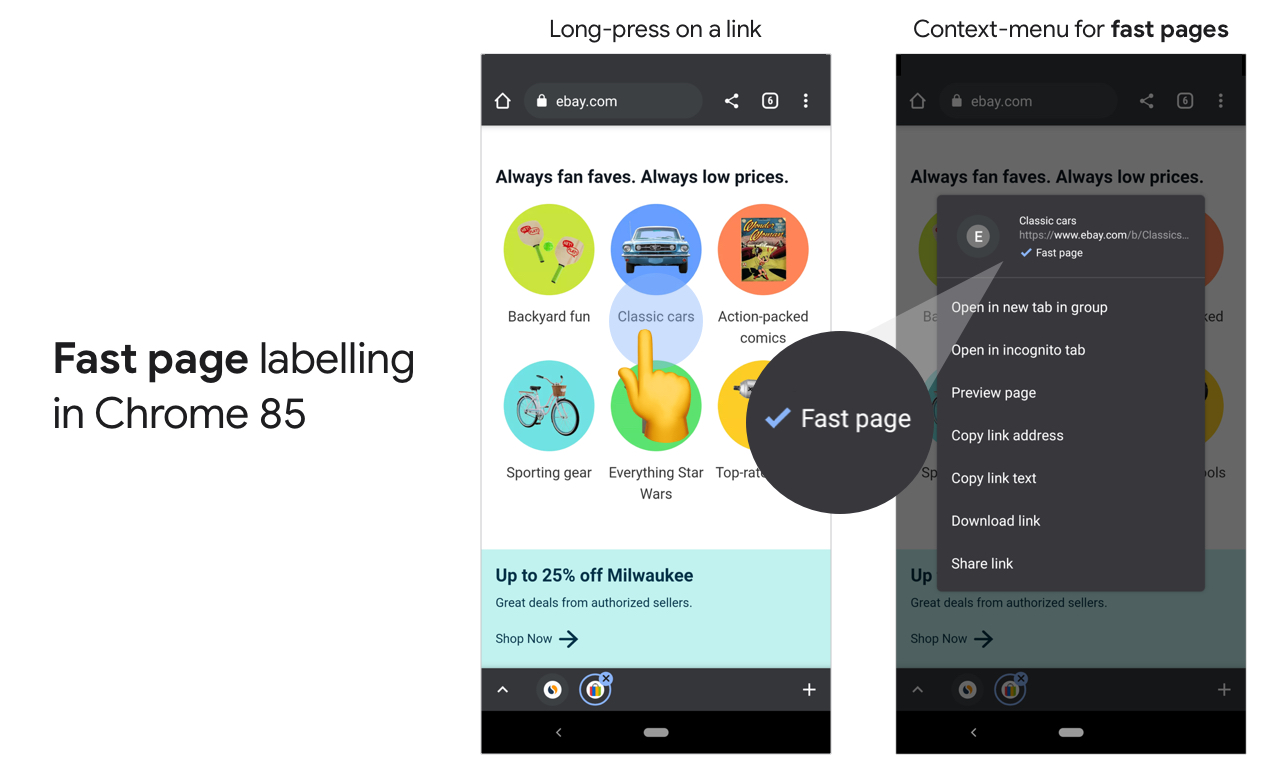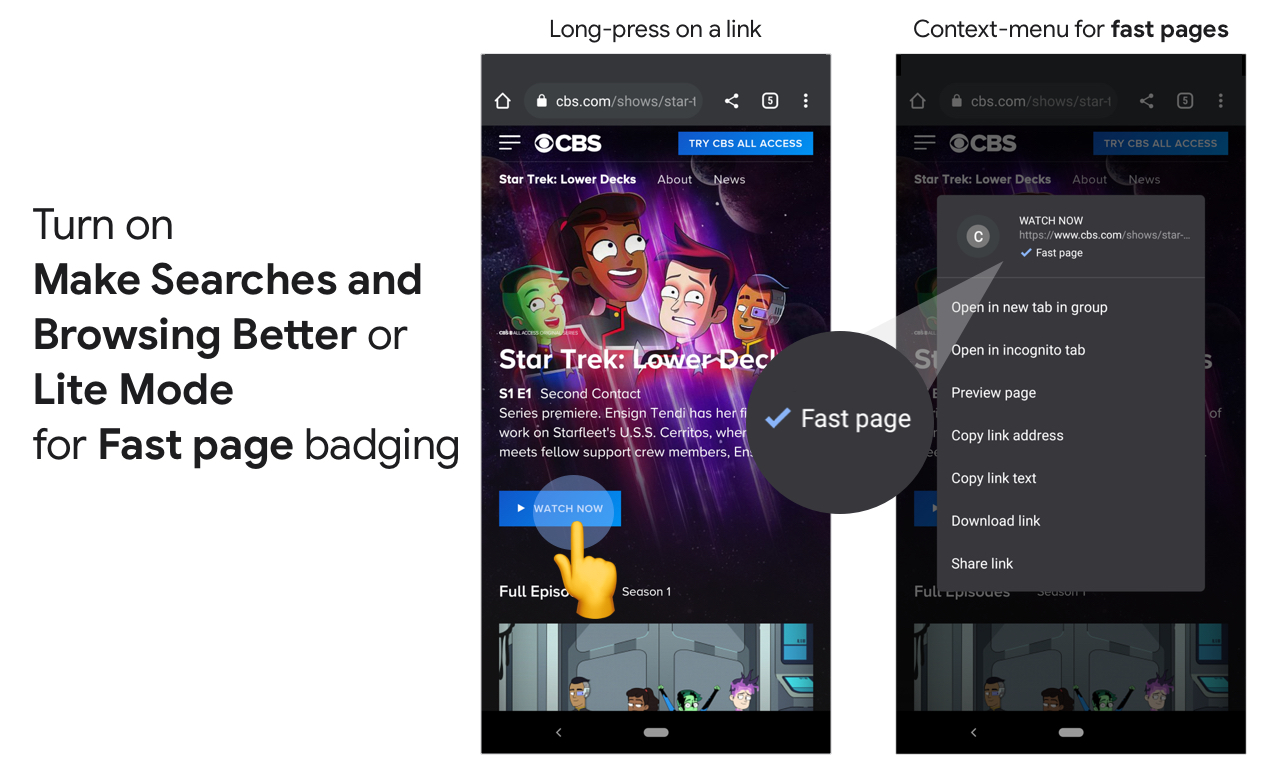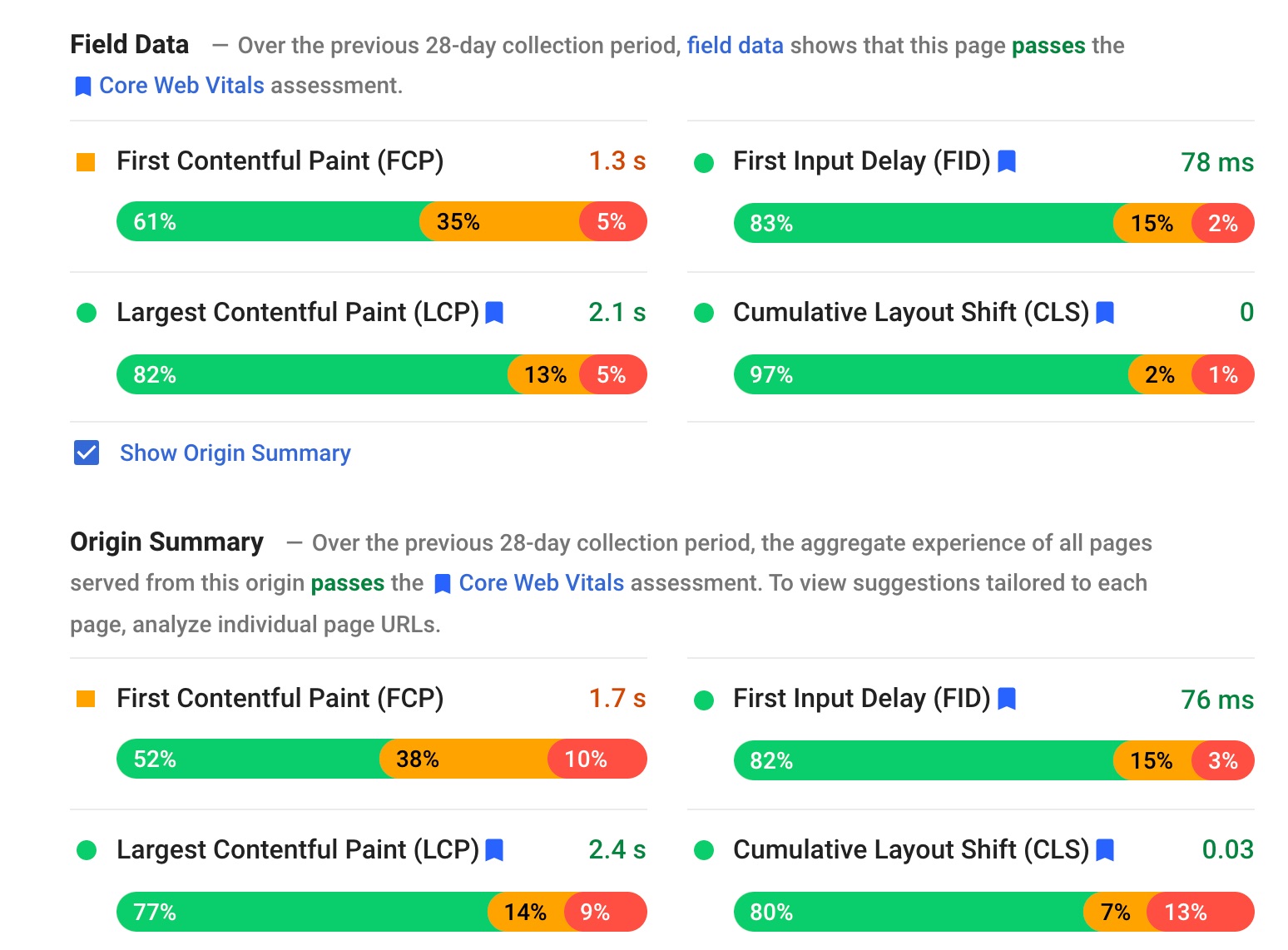Fast page labelling in Chrome for Android
September 5, 2020
In 2019, the Chrome team began to explore ideas for giving users transparency into pages that delivered a great user experience on mobile. Today I would like to talk about our first exploration into this space - “Fast page” labelling in Chrome for Android.
Chrome on Android will begin to highlight high-quality user experiences on the web, starting with the labelling of fast links via the link context-menu. This is a widely used menu users see when long-pressing on a link (e.g to open a page in a new tab). This change will be rolling out starting in Chrome 85 Beta.
“Fast page” labelling is based on signals from the Core Web Vitals metrics which quantify key aspects of users’ experience, as experienced by real-world Chrome users. The Core Web Vitals metrics measure dimensions of web usability including loading time, interactivity, and the stability of content as it loads, and define thresholds for these metrics to set a bar for providing a good user experience.

Investing in these user-centric page quality metrics helps to drive usability improvements for users and helps businesses see increased engagement.
Links to pages that have historically met or exceeded all metrics thresholds for the Core Web Vitals will be displayed with the new “Fast page” label. This is shown when a user long-presses a link prior to navigating to a page, and it indicates that most users navigating to it have a particularly good experience.

“Fast page” labelling may badge a link as fast if the URL (or URLs similar to it) have been historically fast for other users who visited it. When labelling, historical data from a site’s URLs with similar structure are aggregated together. Historical data is evaluated on a host-by-host basis when the URL data is insufficient to assess speed or is unavailable, for example, when the URL is new or less popular. Labelling status is currently updated twice weekly and has a 28 day window.
Our plan for “Fast page” labelling is to keep alignment with Core Web Vitals as they evolve, so that we are always labeling pages that have optimized against the metrics that are most representative of a user’s overall experience.
As noted, developers should expect the definitions and thresholds of the Core Web Vitals to remain stable, and updates to have prior notice and a predictable, annual cadence.

Labelling has been rolled out to Chrome 85 beta, but if you would like to try labelling on Chrome for Android today, go to chrome://flags and enable Context menu performance info and remote hint fetching. Once fully rolled out, users will see labelling if they have Lite Mode or “Make Searches and Browsing Better” turned on. Next, navigate to any qualifying page, such as the Wikipedia page for the Internet, and long-press on any link.

We anticipate that optimizing for the Core Web Vitals may require some investments in improving page quality. To help out, we updated our developer tools to surface information and recommendations: Lighthouse, DevTools, PageSpeed Insights, and Search Console team added a report dedicated to Core Web Vitals too.

We believe the web serves an important role in our lives, and hope that “Fast page” labelling proves helpful to users who are on slow or spotty network connections. Over time, we may also experiment with labelling in other parts of Chrome’s UI. Ultimately, our aim is to provide users with a healthy level of transparency into the experience they may have with a page.
Chrome is committed to working with developers to ensure a thriving web, and the steps we take, such as the ones outlined above, are designed with these goals at heart.
This is an expansion of a post shared on the Chromium Blog